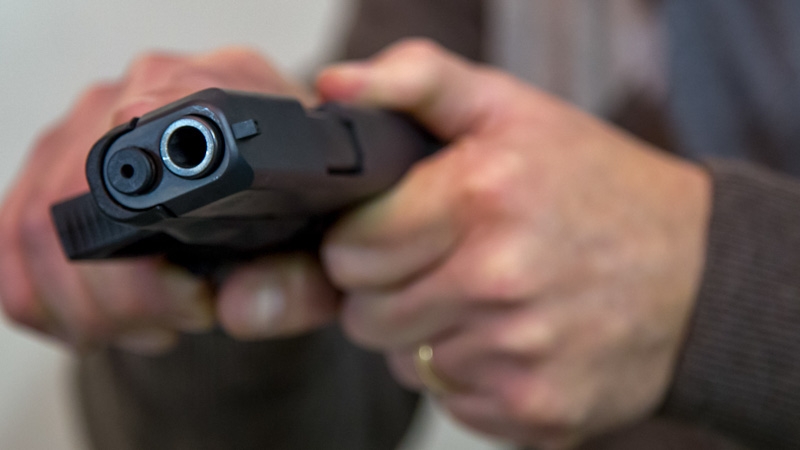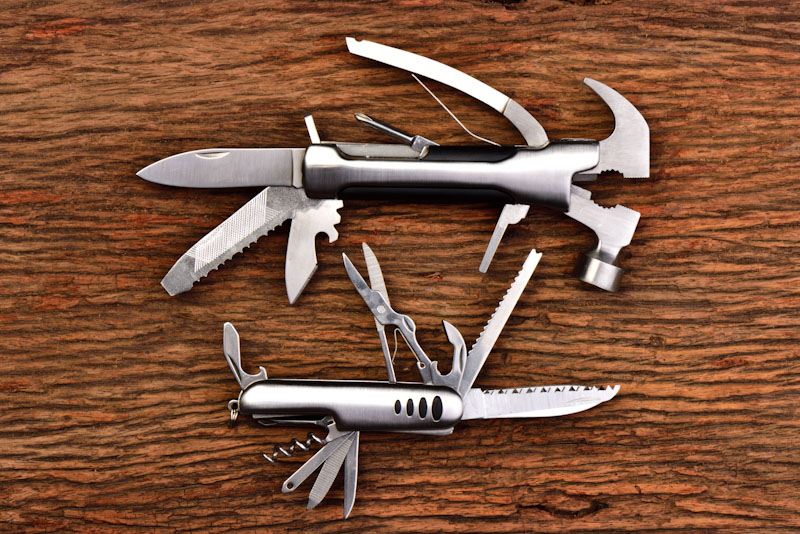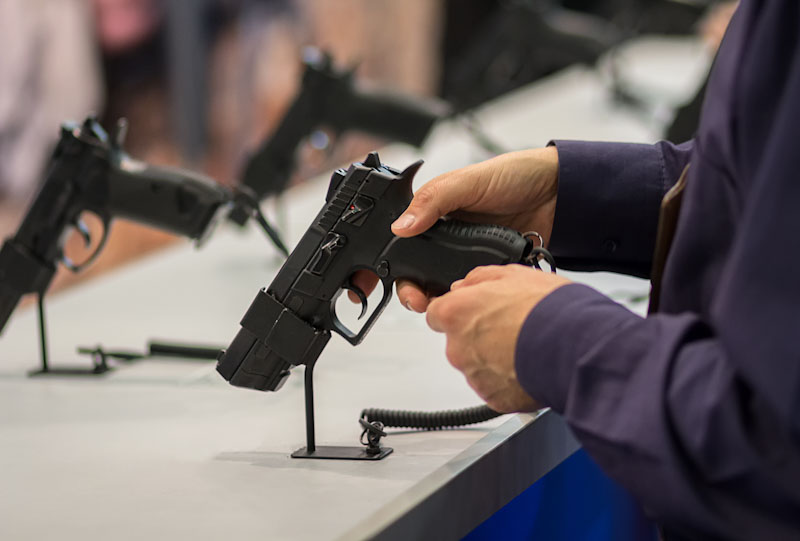In this era of rapidly growing interest in concealed carry, a multitude of individuals find themselves intrigued by the concept but are unsure of where to begin their journey. The vast array of information available can be overwhelming, and it becomes disheartening to witness self-proclaimed experts inundating the subject with unnecessary complexity.
The truth is, you don’t need to possess the skills of a highly trained special agent to confidently carry a concealed handgun and wield it effectively. While elite professionals undoubtedly possess remarkable abilities, the art of concealed carry is accessible to anyone willing to put in the effort to learn and practice.
When venturing into the world of concealed carry, it is essential to embark on a journey of education and preparation. Familiarizing yourself with your local laws and regulations pertaining to concealed carry is a crucial initial step. Each state and jurisdiction may have its own set of rules, so understanding the legalities will ensure you stay on the right side of the law. Next, there are a few things you should consider if you want to become a responsible gun carrier.
Mastering the rules of firearms safety
Mastering the rules of firearms safety is an indispensable aspect of your venture into the world of firearms. It is of utmost importance to internalize and abide by the four fundamental firearm safety rules, as they form the solid foundation of responsible gun ownership.
Not only do these rules safeguard you and your cherished ones, but they also extend their protection to innocent bystanders, including your beloved four-legged companions.
Though the prospect of adhering to four rules might seem daunting, it is crucial to ingrain one core principle in your consciousness: Never, under any circumstances, should you point a firearm at anything unless you are genuinely prepared to inflict serious harm or potentially take a life.
Treat every firearm with the utmost respect: This first rule emphasizes the significance of treating firearms with unwavering respect and responsibility. Understanding that a firearm is a powerful tool designed to deliver lethal force empowers responsible gun owners to handle their weapons with the highest level of care. It also reminds us never to be complacent or careless when dealing with firearms, regardless of familiarity or experience.
Always keep the muzzle of your firearm pointed in a safe direction: This second rule highlights the critical importance of muzzle discipline. The muzzle, or the front end of the firearm’s barrel, should never be pointed at anything you are not willing to destroy. By adhering to this principle, you minimize the risk of accidental discharge or unintended harm to yourself or others. A safe direction might be towards the ground or a safe backstop, ensuring that any discharged bullet will not harm anyone in its path.
Keep your finger off the trigger until ready to shoot: The third rule emphasizes the significance of maintaining trigger discipline. Your finger should remain off the trigger and rest alongside the firearm until you are ready to engage your target actively. This prevents negligent discharges caused by inadvertently placing pressure on the trigger, especially when handling or holstering the weapon.
Always be certain of your target and what lies beyond: The fourth rule stresses the importance of target identification and awareness of the surroundings. Before firing a shot, you must positively identify your target and be fully aware of what lies beyond it. This ensures that any missed shots or over-penetrations do not inadvertently strike unintended targets or cause collateral damage.
Emphasizing safety and proficiency
Every responsible gun owner must start at the foundation by mastering firearm safety rules and strictly enforcing them whenever handling a firearm. A thorough understanding of your handgun’s manipulation and maintenance is equally vital.
Being capable of loading, unloading, and operating your firearm’s controls proficiently, even in total darkness, is a crucial skill to acquire. Furthermore, learn to clear stoppages without visual aid and familiarize yourself with field stripping and maintaining your weapon to keep it in optimal working condition.
Investing in effective training
One crucial piece of advice that may seem obvious, yet remains of paramount importance, is to seek comprehensive and high-quality training within your means. Handling a firearm demands knowledge and proficiency, emphasizing the significance of understanding safety protocols, efficient operation, and effective shooting techniques.
Admittedly, quality training can be financially challenging, particularly for those living paycheck to paycheck. However, saving gradually and seeking out trustworthy local sources that offer free or affordable training, even if brief, can be a game-changer.
Handgun selection
Finding a handgun that aligns with your lifestyle and purpose is an essential step in responsible gun ownership. If you intend to keep a firearm solely for home defense, a larger and more powerful option might be suitable.
However, if carrying daily is your plan, opt for a handgun that complements your daily routines, ensuring comfort and ease of concealment. Beyond size, the fit of the gun to your hand is equally crucial for accurate and confident shooting. Remember, the best choice for you may not be the same as what works for others; embrace individual preferences and worry less about caliber debates.
The right fit for safe carry begins with the holster
When carrying a firearm, the holster you choose plays a pivotal role in ensuring comfort, accessibility, and safety. Seek out a well-designed holster that securely attaches to your person, preventing any unwanted removal.
The choice of where to carry—small of the back, hip, appendix, or cross-draw—depends on your preferences and body type. A good holster that suits your needs, coupled with consistent practice, takes precedence over any particular brand or style.
For women or those considering off-body carry in a purse or satchel, it is crucial to invest in a purpose-built solution tailored to carry a handgun securely and safely.
Ammo management
Maintaining a reliable carry option for extra ammunition or reloads, such as an additional magazine, speed loader, or speed strip, is undeniably a wise practice.
Having quick access to a reload undoubtedly enhances your preparedness. However, it’s crucial to find the level of protection that aligns with your comfort and needs. Carrying a reload may not always be mandatory, but it’s certainly a prudent consideration.
Consider reliability
Reliability is the cornerstone of any carry firearm. While some advocate for a gun that can fire 1,000 rounds without a stoppage, it’s essential to test your carry ammunition for reliability with the actual self-defense rounds you plan to use. If your firearm can consistently cycle and feed 100 to 200 rounds of your preferred ammunition during real-life training drills without any stoppages, it instills confidence in its dependability.
Progression is possible only through practice
Practicing with your handgun regularly is paramount, with the frequency of practice outweighing the length of each session. It is essential, however, to distinguish between practice and training—both vital components of skill development.
While training involves acquiring new skills, practice entails honing and refining those abilities. To prioritize your efforts, consider which defensive handgun skills are most crucial for your safety and competence.
Mastering the draw is a key EDC skill
Mastering the swift and precise draw of a handgun from a holster and accurately orientating it towards a threat or target, is a critical skill for any concealed carry practitioner. Though not easy to execute with speed and grace, it can be honed through hours of dry practice without ammunition, making it a versatile skill to refine almost anywhere. Emphasize precise movements, avoid wasted motions, and gradually increase speed over time to develop efficiency and confidence.
Hitting the mark and accurate shooting
Achieving accurate hits on target poses a significant challenge, especially for novice handgun shooters. The key to success lies in holding the handgun with proper sight alignment on the target and gently pressing the trigger without disrupting the sight picture.
Though seemingly simple, this skill demands dedicated practice. Begin with slow repetitions, gradually building speed to improve marksmanship. An excellent training drill to enhance proficiency is drawing the concealed handgun and executing a single headshot at a distance of approximately 5 yards.
Find a good school
Enrolling in a reputable firearms training school is one of the most beneficial investments one can make in honing their concealed carry skills. There are various reputable firearms training schools with a rich history that have empowered countless students to apply their teachings to real-life situations, potentially saving lives.
While the cost of attending some of these schools may seem steep, considering it as life insurance significantly alters the perspective, making it an affordable and invaluable investment.
Here are some steps to help you find a reputable firearms training school:
Research and gather information: Start by researching different firearms training schools in your area or within a reasonable traveling distance. Look for schools that specialize in concealed carry training and have a strong reputation for providing quality instruction.
Read reviews and testimonials: Check online reviews and testimonials from past students. These can provide valuable insights into the school’s training methods, instructors, and overall satisfaction levels of students.
Inquire about instructors’ credentials: Look for schools with experienced and certified firearms instructors. Instructors with law enforcement or military backgrounds often bring valuable real-world experience to their teaching.
Course offerings: Check the school’s course offerings to ensure they cover the topics you are interested in, such as firearm safety, concealed carry laws, defensive shooting techniques, and situational awareness.
Visit the school: If possible, visit the school in person to get a feel for the facility, the range, and the overall atmosphere. This will help you assess whether the school’s environment aligns with your learning preferences.
Ask for recommendations: Seek recommendations from friends, family, or fellow gun owners who have attended firearms training schools. Personal recommendations can carry significant weight in choosing the right school.
Check for certifications and affiliations: Look for schools that are certified by relevant organizations or have affiliations with respected firearm training associations. This can indicate that the school meets specific standards of excellence and professionalism.
Class size and student-to-instructor ratio: Inquire about the average class size and the student-to-instructor ratio. Smaller class sizes and lower student-to-instructor ratios allow for more personalized attention and effective learning.
Safety protocols: Ensure that the school emphasizes safety throughout its courses. A reputable firearms training school will prioritize safety during all training sessions.
Concluding
Becoming a responsible and proficient concealed carry practitioner requires dedication, commitment, and continuous improvement. Mastery of essential skills, such as the draw, accurate shooting, and efficient firearm handling, lays the foundation for confident self-defense.
It is essential to remember that while carrying a concealed handgun brings a sense of security, it also carries significant responsibility. Emphasizing safety, regular practice and ongoing training are non-negotiable aspects of responsible gun ownership.










Amy | September 27, 2023
|
This article hits the nail on the head. EDC isn’t just about having a firearm; it’s about the responsibility that comes with it. The guidelines provided are a must-read for anyone considering carrying a firearm daily. The emphasis on training, awareness, and safe storage is crucial. A responsible gun carrier should always prioritize safety above all else, both for themselves and those around them.
JohnB | September 27, 2023
|
I appreciate the article’s intent, but some of the guidelines feel a bit excessive. While training is essential, the level of constant vigilance the article suggests can lead to unnecessary paranoia. Being a responsible gun owner is vital, but there’s also a need to strike a balance. Over-preparing can sometimes cause one to overreact in situations that don’t warrant it.
Suzy | October 23, 2023
|
A responsible person DOES NOT CARRY A GUN!!!
Jack | May 31, 2024
|
As they are responsible, you aren’t aware they are carrying.